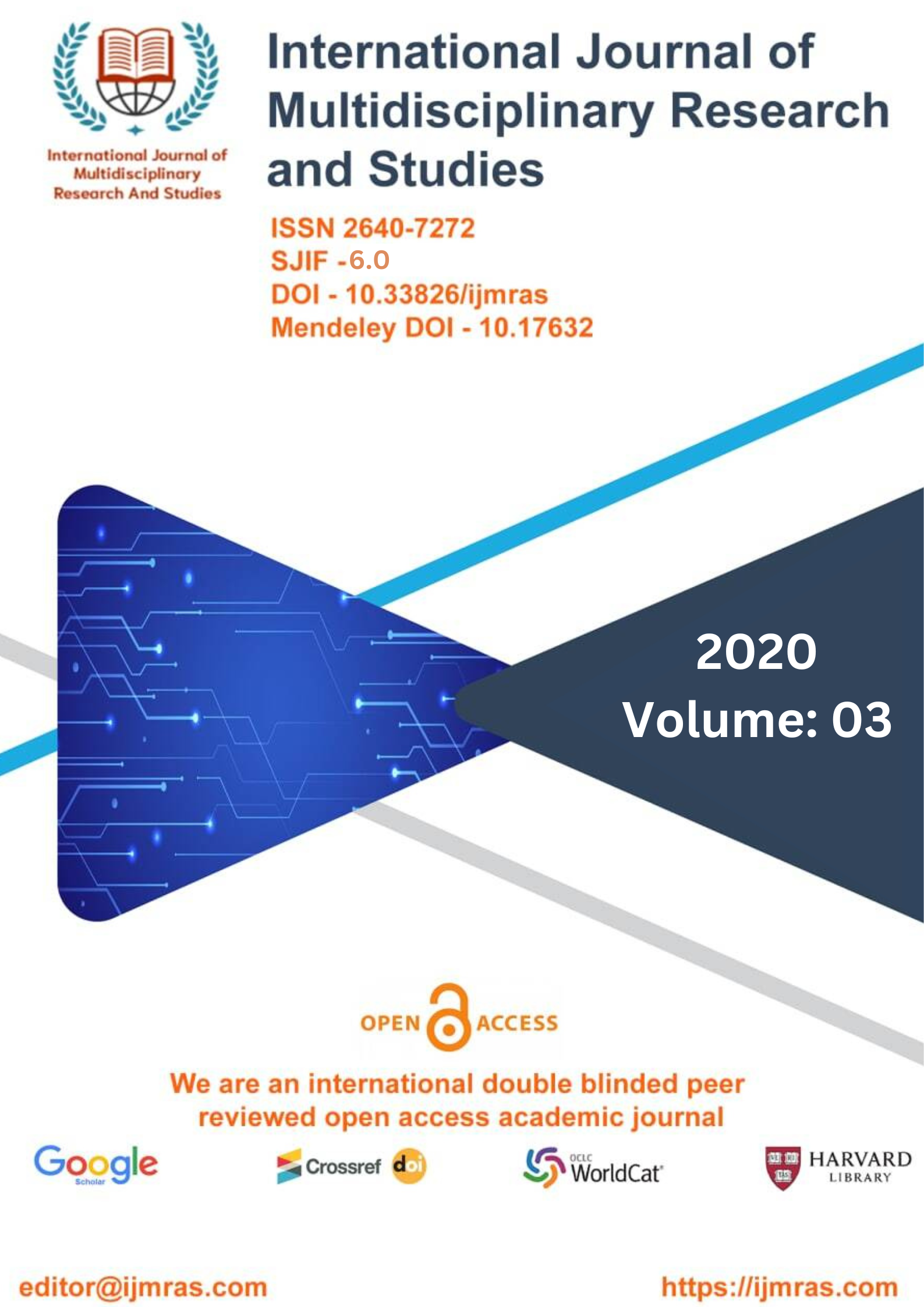SURVEY FOR DIFFERENT KINDS OF AQUATIC MICROPHYTES FOUND AT MUZAFFARPUR

Abstract
The current study was carried out in Manikamaun wetland located in North Bihar, where Macrophyte diversity and biomass estimation was observed from June 2019 to March 2020. A total of 24 species of macrophytes belonging to 15 families were recorded from the wetland. From the identified species, Hydrocharitaceae (3), Potamogetonacea (3), Poaecae and Cyperaceae (2 each) were found dominant. Biomass productivity of observed macrophytic plants was estimated, Aquatic macrophytes were categorized in 4 types, viza, Free-floating plants (40%), Submerged (33%), Rooted with floating leaves (25%) and emergent (2%). Maximum biomass was recorded in month of February 387.91 g/m2 and minimum during the month of July 123.27 g/m2, a total of 2541.88 g/m2 of biomass was recorded from the maun. Among the various macrophyte species reported, highest biomass contributor was Eichhornia crassipes 1293.26 g/m2, followed by Najas graminea (610.17 g/m2 ), Nelembo nucifera (562.75 g/m2 ), and Hydrilla verticellata (221.24 g/m2 ). The aquatic ecosystem is composed of aquatic flora and fauna which interact together in maintaining the aquatic ecosystem. Aquatic macrophytes are macroscopic forms of aquatic vegetation, including macro algae, mosses, ferns and angiosperms found in aquatic habitat. Macrophytes of freshwater ecosystems have diverse roles to play in the structure and functioning of these aquatic ecosystems.
Keywords
Aquatic, Microphytes, Hydrocharitaceae, PotamogetonaceaHow to Cite
References
Acharjee, S., & Sarma, J. N. (2012). A study of wetlands and their role in geoecological environment of the Bhogdoi basin, Jorhat, Assam, using remote sensing and GIS. International Journal of Physical and Social Sciences, 2(10), 310-323
Ambasht, R.S. (1971). Ecosystem study of a tropical pond in relation to primary production of different vegetational zones. Hydrobiologia, 12: 57-61.
Ambasht, R.S. and K. Ram (1976). Stratified primary productive structure of certain macrophytic weeds in a large Indian lake. pp. 147-176. In: C.K.. Varshney and J. Rzoska (Eds). Aquatic weeds in South East Asia. Dr. W. Junk, Hague.
Anand, V.K. (1986). Productivity study of Hydrilla verticillata (L.f.) Royle in Gadigarh stream, Jammu. J. Ecol. 13(2): 329-333.
Billore, D.K. and L.N. Vyas (1982). Distribution and Production of Macrophytes in Pichhola Lake, Udaipur (India), pp. 45-54. In: B. Gopal, R.E. Turner, R.G. Wetzel and D.F. Whigham (Eds). Wetlands Ecology and Management. National Institute of Ecology and International Scientific Publications, India.
Billore, S.K.; R. Bhardia and A. Kumar (1998). Potential removal of particulate matter and nitrogen through roots of water hyacinth in a tropical natural wetland. Current Science 74(2): 152-156.
Boyd, C.E. (1969). Production, mineral nutrient absorption and biochemical assimilation by Justicia americana and Altemanthera philoxeroides. Arch. Hydrobiol. 66:139- 160.
Cook, C. D. (1996). Aquatic and wetland plants of India. Oxford University Press.
Crowder, A.A.; J.M. Bristow; M.R. King and S. Vandcrkloct (1977). Distribution, seasonality and biomass of aquatic macrophytes in Lake Opinicon. Naturaliste Can. 104:441-456.
Devi, 0. Ibeton (1993). Distribution, primary production and nutrient status of the macrophytic communities in Waithou lake, Manipur. Ph.D. Thesis, Manipur University, Manipur.
Devi, K. Indira (1998): Ecological studies of freshwater macrophytes in Utrapat lake, Manipur. Ph.D. Thesis, Manipur University, Manipur.
Devi, K. Indira and B.M. Sharma (1997). Growth form analysis o f the macrophytes of Utrapat lake, Manipur. Proc. Right Manipur Science Congress, Manipur University, pp. 22-30. (linv.).
License
Copyright (c) 2020 GUDDI KUMARA

This work is licensed under a Creative Commons Attribution 4.0 International License.
Individual articles are published Open Access under the Creative Commons Licence: CC-BY 4.0.



